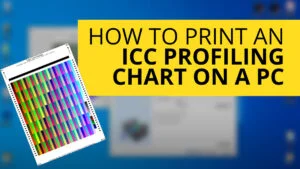The human visual system has evolved over millions of years to be very sensitive to changes in flesh tones. We can judge a person’s mood or health just by the colour of their skin. This means you have to take extra care when printing portraits. Two variables are key to getting healthy, natural looking skin tones – paper choice and colour profiling.

Image © Brett Florens
PAPER CHOICE
Lighter skin tones, when printed, are made up of quite small percentages of ink and so can be heavily influenced by the actual paper base colour. Even dark skin tones are often quite near neutral and so still influenced by the grey balance of the print that starts with the white of the paper.
Glossy and semi-gloss papers such as PermaJet Oyster 271 or Smooth Gloss 280 can give a more traditional look to portraits and have a good scratch and scuff resistant surface making them suitable for handling, but their base colour is often quite a blueish white and this can give a portrait a cooler feel. They are very good for high contrast mono and bolder colour portraits. The brighter whites can also benefit wedding dress photos.
Baryta fibre based papers such as FB Gold Silk 315 are often slightly yellower than a gloss paper. This can give portraits a wonderful warmth and tone. They have a thickness and a weight to them that makes them quite tactile and good to handle. The semi gloss surface delivers very good levels of contrast and colour saturation but there is a slight surface texture that wont suit every subject.
Textured fine art papers are probably best avoided for portraits as the texture can distract from smooth skin tones, but there are plenty of smooth fine art papers than can deliver a very classy feel to a portrait. Papers such as Portrait Rag 285 have become very popular amongst social photographers. Portrait White 285 has a whiter base colour making it ideal for wedding photography.

Image © Brett Florens

Image © Brett Florens
COLOUR PROFILING
Because we can instantly see if a skin colour is right or wrong, colour management for portrait printing is even more critical than for other subjects. Generic downloaded paper profiles probably wont be quite accurate enough. Lighter skin colours contain small percentages of ink and the profile only needs to be off by a few percent for skin colour to look wrong. Getting custom printer profiles made for your printer will pay dividends. You’ll get better skin tones on your first print.
If you are using Photoshop then the choice of working space profile is still important. Many social photographers work in sRGB as that is what the labs that they use for printing ask for, and they assume that skin colours are probably within the gamut (range) of sRGB. However, as a species we display a huge range of skin colours and many redder skin colours in character portraits or make up in glamour of fashion shots will be outside of sRGB, and sometimes even Adobe RGB. If you are taking high contrast, dynamic, colourful stylised portraits then a larger working space could be beneficial. Lightroom always uses a large gamut working space.
When printing a portrait with a printer profile rendering intent choice is as important as ever. See our blog post on Rendering Intents for a good introduction. Perceptual rendering will often retain more subtlety of tone and colour in portraits and keep highlight detail in wedding dresses or other high key subjects. Saturation should only be used for quite brash style portraits. Relative Colorimetric can be used for less saturated subjects.

Image © Brett Florens
As with every type of photography the style you choose will often direct you to one type of paper or another that delivers the look you want. Colour management options also play their part in that look. For portraiture it is vital that you think carefully about the choices and vary what you use for different styles and customer types.
Images by www.brettflorens.co.uk/
#RobGriffith #technical #printing #portraits #wedding #advice #paper #colourprofiling #ICCProfiling






